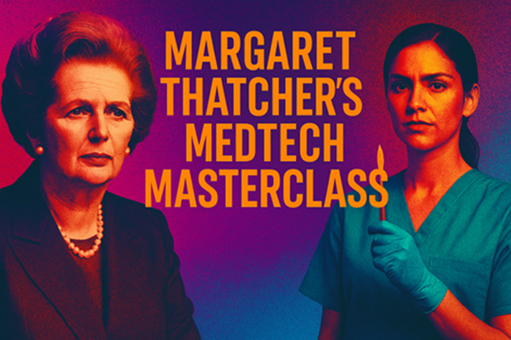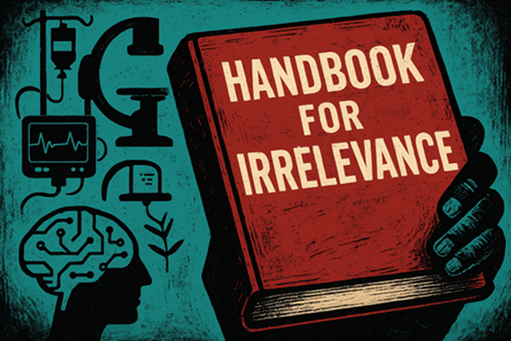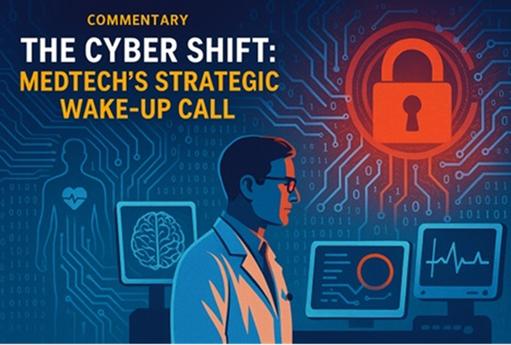|
The Strategic Shift: What It Requires
To reposition cybersecurity as a strategic asset rather than a tactical safeguard, MedTech firms must confront not just technical debt, but organisational inertia. The shift is not just about tooling - it is about intent, design, and governance. It requires cybersecurity to be reframed not as a risk to be minimised, but as an enabler of trust, reliability, and competitive advantage in an increasingly digitised care environment.
This evolution begins at the source: with the way products are conceived and built. As medical technologies grow more software-centric, cloud-connected, and AI-augmented, security can no longer be treated as a boundary function. It must be architected into the product itself - from the earliest stages of code development through to deployment and continuous operation. Features such as autonomous threat detection, runtime observability, and self-healing systems should be viewed not as security enhancements, but as preconditions for safety and performance.
Equally pressing is the need to address the digital foundations on which many MedTech platforms still rely. Legacy architectures, fragmented tech stacks, and opaque software supply chains create systemic vulnerabilities that cannot be patched into compliance. Transitioning to zero-trust models, redesigning identity and access frameworks, and critically evaluating third-party and open-source dependencies are all strategic acts - ones that demand investment and board-level sponsorship.
But this is not just a technical pivot. It is a leadership challenge - and for many traditional MedTechs, an uncomfortable one. These are organisations whose historical strengths lie in regulated manufacturing, hardware engineering, and clinical validation - domains where cybersecurity has largely been peripheral. As a result, many executive teams lack both the digital fluency and the institutional will to lead this transition from the top.
This gap must be acknowledged, not ignored. Boards and CEOs will need to make deliberate decisions: whether to upskill from within, bring in cyber-savvy leadership from adjacent sectors, or build new operating constructs that allow cybersecurity to participate meaningfully in innovation and growth. Episodic advice from legacy consultants will not bridge the divide. What is required is sustained internal capability - leaders who can translate cyber strategy into product architecture, supply chain integrity, and patient-facing trust.
Ultimately, this is about shifting how cybersecurity is valued. Not as a constraint on speed, but as a discipline that enables scale without fragility. Not as an operational cost centre, but as a marker of product maturity and market readiness. The firms that succeed will not be the ones with the most detailed compliance checklists - but the ones that treat resilience as a design principle, embed it into how they grow, and make it intelligible at the executive table.
What Healthcare Professionals and MedTech Executives Need to Know
Cybersecurity is no longer just an IT issue - it is a frontline concern with direct consequences for patient safety, care delivery, and institutional trust. When digital systems fail, diagnoses are delayed, communication breaks down, and care grinds to a halt.
For healthcare professionals, this is not about becoming security experts, but about recognising their role as active participants in a secure clinical environment. Cyber hygiene – avoiding phishing, safeguarding credentials, reporting anomalies - is now as fundamental as infection control.
But the burden does not fall on clinicians alone. MedTech executives have a strategic role to play. Security must be built into devices and platforms from the ground up - not bolted on as an afterthought. Transparent data flows, resilient design, and clear incident protocols are now competitive differentiators.
Clinicians should be empowered to ask questions about the tools they use. And MedTechs should be prepared to answer them - with clarity, transparency, and proof of robustness. This is no longer a compliance checkbox - it is a trust contract.
The convergence of clinical care and cyber resilience is not optional. It is a shared imperative. When both clinicians and MedTechs treat cybersecurity as integral to care - not adjacent to it - everyone wins - patients, providers, and the bottom line.
From Risk to Differentiator
Cybersecurity, long treated as a compliance burden or operational cost, is emerging as a strategic lever - one that can define leadership in an industry under growing scrutiny. In an era where digital interdependence amplifies both opportunity and exposure, the ability to safeguard data, devices, and systems is no longer peripheral to market success - it is a precondition for trust. And trust, in healthcare, is the ultimate currency.
The firms that recognise this shift early - those that move cybersecurity from the margins of risk management to the centre of value creation - will earn more than regulatory approval. They will distinguish themselves to providers, payers, and patients as credible partners in an increasingly volatile landscape. But this transformation is neither intuitive nor easy, particularly for legacy MedTech companies still shaped by industrial-era logistics.
Many of these organisations are led by seasoned executives whose strengths lie in operational rigour, market consolidation, and hardware-driven innovation. Their playbooks were built in a pre-digital world. As a result, cybersecurity often remains treated as a technical function, isolated from strategic and design conversations. Yet the demands of digital health - interoperability, cloud architecture, real-time data flows - require a different mindset: one in which security is not an add-on, but an ethos.
To lead, MedTech firms must reframe cybersecurity as a dimension of product integrity and brand credibility. This means investing not just in perimeter defences, but in structural clarity - streamlined architectures, secure development lifecycles, and resilient supply chains. It also means showing up early in regulatory dialogues - not reactively, but as co-creators of the frameworks that will govern the next decade of digital care.
The cost of inertia is rising. Firms that cling to outdated assumptions will face more than technical debt - they will face escalating insurance premiums, investor scepticism, and reputational fragility. In a sector where innovation moves fast but trust moves slowly, cybersecurity is no longer a checkbox. It is a differentiator. Perhaps even the differentiator.
A Call to Action for the Industry
The future will not be secured by digital immigrants marking old playbooks. The age of incremental adaptation has ended. As healthcare becomes irreversibly digital - interconnected, algorithmically driven, and vulnerable at scale - cybersecurity must be recast not as an operational safeguard, but as a strategic discipline integral to how MedTech companies create value, protect reputation, and remain viable in an AI-mediated world.
This is not a technical fix. It is a leadership reckoning.
Cybersecurity must now shape the logic of innovation itself. Boards can no longer afford to treat it as a downstream concern, or a matter left to IT. It is a boardroom issue because it is a business continuity issue, a regulatory risk, a brand risk, and increasingly, a differentiator in markets that are defined by trust. Strategy today demands fluency not only in markets and mergers, but in models of digital resilience.
For clinicians, this moment calls for an expanded view of professional responsibility. Digital vigilance must be understood as part of clinical excellence, embedded into training and practice alongside patient safety and infection control. The tools clinicians rely on - whether diagnostic algorithms or remote monitoring platforms must be interrogated for integrity, transparency, and resilience.
For MedTech leaders, the implication is clear: cybersecurity must move from the periphery of compliance into the heart of corporate strategy. This means building organisations capable of anticipating, adapting, and learning in real time. It means hiring cyber leaders who can speak not just to risk but to growth. It means shedding legacy architectures in favour of streamlined, AI-enabled ecosystems designed to defend and evolve.
Boards must now ask themselves hard questions. Who at this table understands the strategic dimensions of cyber risk? Are we prepared to steer this company through the next decade of intelligent healthcare, or are we still playing defence with yesterday’s tools and instincts? Involvement in cyber strategy can no longer be delegated - it must be owned, shaped, and animated by those charged with steering the future.
And beyond the walls of individual organisations, the sector must mature into a posture of deep collaboration. Cyber risk is systemic, diffuse, and evolving faster than any single actor can manage alone. This calls for shared threat intelligence, co-developed standards, and new public-private architectures for digital trust.
The age of digital medicine is not arriving - it is already here. Whether it becomes a moment of significant progress, or a cascade of preventable failures depends on how seriously we choose to lead now.
Takeaways
The uncomfortable truth is this: many MedTech companies are building the future of healthcare on digital foundations they barely control and scarcely understand. In an industry where lives are on the line, treating cybersecurity as a technical afterthought is no longer just negligent - it is dangerous. The next breach will not just compromise data; it will compromise trust, delay care, and potentially cost lives. And in a market where regulators are sharpening their focus and patients are becoming more digitally aware, that trust - once lost - will not be easy to recover.
Cybersecurity must become a core expression of leadership, not a delegated function buried in the IT org chart. It must be part of your value proposition, your innovation roadmap, and your boardroom agenda. The companies that win the future will not just be those with the smartest algorithms or sleekest hardware - they will be the ones that embed digital trust into every product, every decision, and every line of code.
This is your moment to lead. Not with slogans or slide decks, but with action. Cyber resilience is not a checkbox. It is your license to operate in the age of intelligent medicine. Do not just adapt - redefine the standard.
|

























